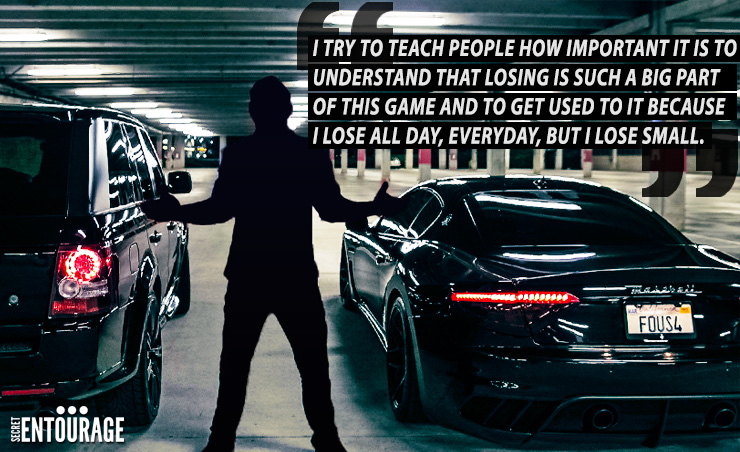How did you get started in trading stocks?
I always wanted to be a stock broker and that’s what I planned to go to school for. One of my best friend’s dad was a stock broker so I would always see him come home in a slick business suit looking fresh. They were pretty well off so I was like, “That looks fun. That’s what I want to do.” This was back in about 2003, almost 10 years ago was when I started back when I was 20 years old. I’m 29 now. In 2005, my mom came across a website called pennystocksonfire.com, which is no longer in existence. I became a member of that website. I actually sold my BMW M3 that I had when I was in college, and said, “Screw it. I’m going to make a sacrifice.” I got rid of my car, started driving an old Ford Ranger. It wasn’t a cool car whatsoever but I was fascinated by the stock market and wanted to get started.
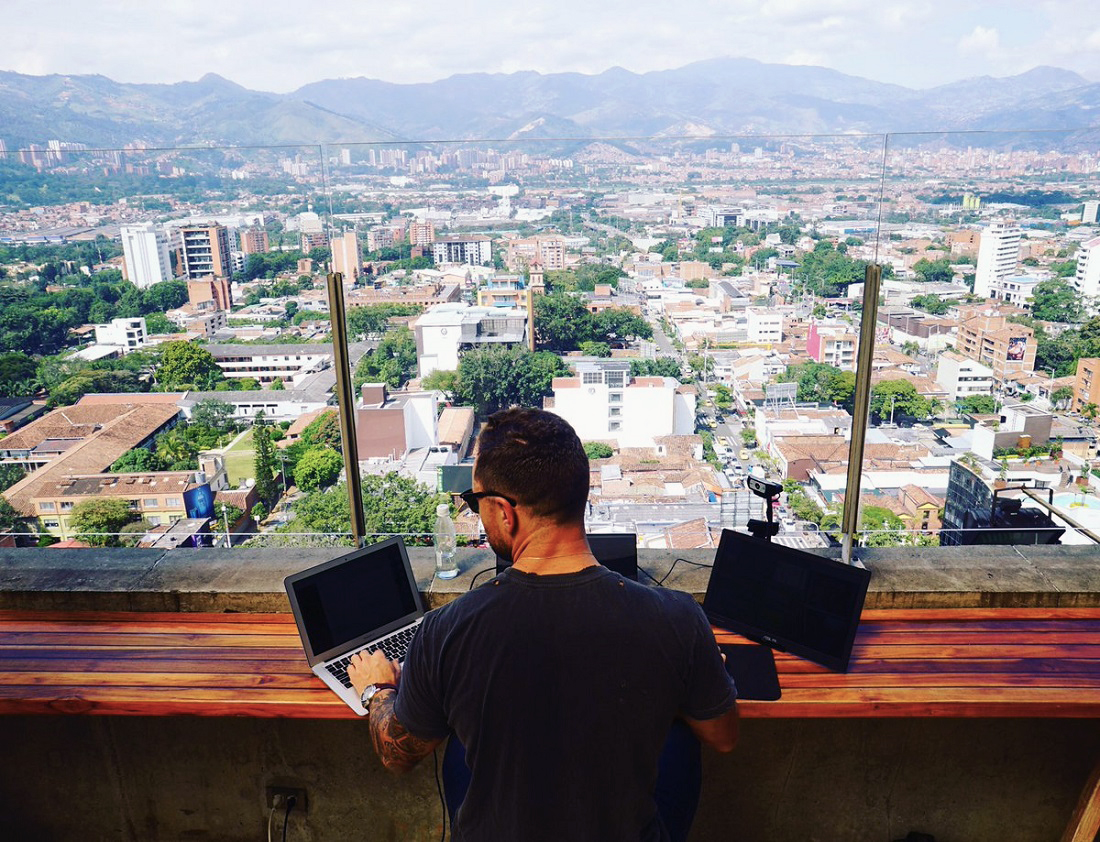
How were your first few years of trading?
I became a pretty popular member after about a year on that website, which is similar to what I do now, which is provide alerts and training on certain strategies to make money in the stock market. I built my foundation of what I learned from this website, but actually lost all that money (about $10,000) that I put in the stock market. It’s very easy to lose money in the beginning if you don’t follow the rules of the game or if you don’t have a strategy.

There are a lot of different strategies out there. I’m not the only trader out there obviously. There are multitudes of ways to make money in the stock market. I just found a niche that works for me and that’s what I’ve been doing since then. It took me almost three years of failing and putting money back in the market. You need to have the mental capacity and discipline to stick with that strategy because if you stray off that strategy and make one slip up, that can turn into a downward spiral. It takes a lot of discipline to stick to the strategy but if you can figure it out which a lot of people can, you just got to give it a shot and see where it goes.

Stocks and trading aside, where did you gain your desire for entrepreneurship?
Well, I think it’s also part of my family. Everyone in my family is an entrepreneur basically. My brother owns a clothing company. My mom and dad also ran a clothing company together. It’s obviously not for anybody. You know, for entrepreneurs, it takes a certain kind of person just to jump in and take that risk. A lot of people just go to school, do the 9-5 thing, but it just was never for me and I’ve never really had, I guess you could say, a real job before.

What were you doing before trading?
I was bartending previously up to this. I started as a security guy at a bar, worked my way up to bar and was bartending. Honestly, it was one of the best jobs I’ve ever had in my life. All you’re doing is talking to girls all day. It was a great job to just have fun with. I was doing that actually in Boise, Idaho and that’s when I finally moved down to San Diego around 2008 in August. Soon after that, I started my company and website. I ran my website for free for two years which was actually formally the www.technicaltrader.net.

I was just trying to get my confidence built up and build a reputation. I’d be like, “All right, you know what? I’m actually providing good services and training to people. Either I take that leap and start charging people for this and make a company out of it or go to school and try to be a stockbroker at a firm or something.” Come April 2008, I finally made that leap, started charging people. I made $30,000 on my first opening month. I was 23 at that time and still bartending at that time as well.

When the stock market crashed in 2008, how did that affect you?
Actually, when I moved to San Diego in 2008, is right when the stock market crashed. Everything became haywire and basically, my business almost fell apart. There wasn’t really anything I could do at that time. Trading was just completely all over the place. The dow was jumping 800 points to 1,000 points in the same exact day. At that point, I was actually more so a swing trader leading up into that.
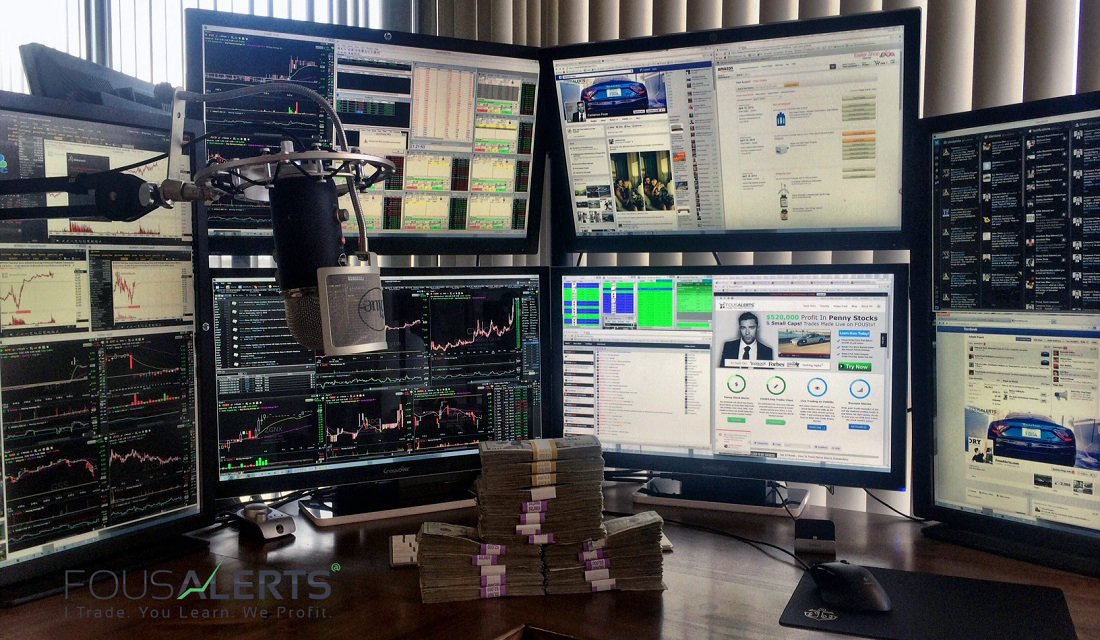
Post 2008, I had to adapt to a different kind of market. I became much more prone to interday swings and learned how to day trade rather than just swing trading. If you don’t know what the difference is, swing trading is holding for multiple days to weeks, and that’s where most of my big trades come from now. With the market still volatile today, with HFT trading, all these algorithms, the interday action is just so big and it actually is much more difficult from a mental aspect because you have to be so quick to react to anything that can happen.
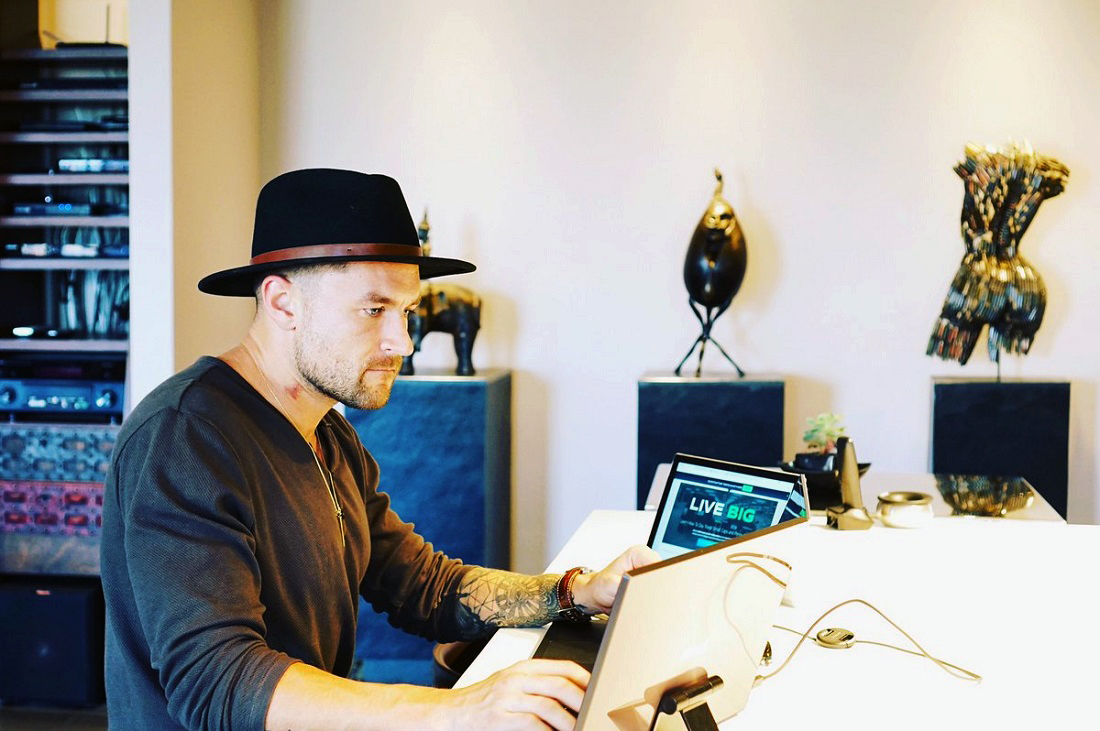
With the stock market crushing your new business. How did it impact your brand and credibility?
It was difficult to find clients. Nobody wanted anything to do with the stock market. Everyone was kind of panicking. There was about four months where I was like, “Holy shit. What am I going to do?” with my business. All these major firms were going out of business and I had just started my company in April so it was definitely a scary start to my journey especially since I decided to drop out of school at that time.

I was on my fourth year in college. I decided, “You know what, I’m not going to go back to school. I’m just going to get started with my business.” The next thing you know, the whole entire financial system collapsed but it was a very short term, about a four-month blip. Luckily, I had money saved up. My business struggled for a very short period of time but then in March 2009, market bottomed out and we have just been firing and killing it ever since then.

“Anytime I buy into a stock, I buy into a breakout pattern. As soon as it goes above this specific breakout pattern, or if it starts going below it, you can pretty much already take a gander that maybe I’m wrong with this position and I need to cut out this stock as quick as possible. But you can always buy back into a stock if it comes back above that breakout line that you’re in.”
– Cameron Fous
With stocks, you win some and you lose some. How do you know when to cut your losses?
I can buy a stock and two minutes later say, “Hey, I’m cutting the loss here. This isn’t working out.” You have to be able to make those decisions very, very quickly and accurately and accept that losing is huge part of this game. My win ratio is really only 52%. I’m only winning 52% of the time but I keep my losses small and let those runners and winners make a big profit for me. A lot of people claim they have 80-90% win rate, which for me is difficult to believe, because I know how difficult it is to trade and how difficult it is to pick winners. What it’s all about is mental capacity and discipline to actually stick to the money management strategies and keeping those losses extremely small.

As I tell everyone, losing money in the stock market is a choice. It’s not that the game is rigged. It’s not that there’s some kind of scam going on. Anytime you buy a stock, you have that decision and the right to sell that stock if it goes into a losing position. The only reason why anybody loses money in the stock market is because they chose to lose. They chose to hold on to that stock if it goes into a losing position. Knowing how to lose correctly is so much more important than knowing how to win. The first thing you can do as a trade is learn how to survive. After that, once you learn how to survive, then you can start learning how to profit and become more successful in the game.

You mentioned you had developed a solid strategy for trading stocks that helped you bounce back. Tell us a little bit about that.
There is a set of patterns that I trade on a daily basis of which I call the Fous4. It’s what I sell at FousAlerts.com in my training package, which is 14 hours long. The Fous4 Strategy is basically four different chart patterns that I’ve been trading for the last 10 years and they still work on a day in, day out basis.

It’s adapted a little bit overtime. I started out with the Fous4, which was strictly swing trading where you’d only hold for days to weeks. Then I came out with Fous4 Part 2, because I had to implement day trading strategies into that core swing trading system. That’s what I created after the whole financial collapse because you had to learn how to day trade. You had to be able to focus on interday charting and understand the movements within. It’s more so based off of certain indicators that I use, one of which is the 13 EMA, which is a 13-day Exponential Moving Average which, in my opinion, is one of the best indicators of short term trends, depending on what kind of time frame you’re looking at.

I look at daily charts and interday minute charts. This might be confusing for people that don’t know what I’m talking about here but basically when you’re looking at a daily chart of a stock and you’re looking at each day, where one candle stick is one day of trading. If you’re looking at interday chart, I look at one minute charts. So I’m looking at each minute. Anytime I buy into a stock, I buy into a breakout pattern. As soon as it goes above this specific breakout pattern, or if it starts going below it, you can pretty much already take a gander that maybe I’m wrong with this position and I need to cut out this stock as quick as possible. But you can always buy back into a stock if it comes back above that breakout line that you’re in.

For example, I got out of this stock today. I lost $600 on it in about five minutes; next thing you know, it’s up and I would have made $2,000 but I cut my loss very short on that position. I could have bought back in. I didn’t and I ended up having to take that loss. But if that stock would have continued to fail, I could have lost $2,000. A lot of people get stuck in that position when even though a stock might come back up, they would have just continued to hold. I try to teach people how important it is to understand that losing is such a big part of this game and get used to it because I lose all day, everyday, but I lose small. I have stocks that do break out of these patterns and there’s a lot of money to be made on those stocks when they do break but half the time, you’re going to be wrong and you’re going to need to cut your loss extremely short.

What are your thoughts on shorting stocks?
I do short every once in a while but my prominent strategy is the Fous4 Strategy that I have been trading for the last 10 years. As far as shorting goes, you can make a lot of money shorting but with every trader that comes into this game, you need to find a niche that works for you and also this comes back to your mentality, your discipline, and your mental capacity to trade. For me, mentally shorting just doesn’t work out that great. I’ve done a lot of shorting in the past and I’m probably about break even on my trades for that strategy. I’m not that great at it and so I don’t do it and stick to what I know and that’s what has made me money.
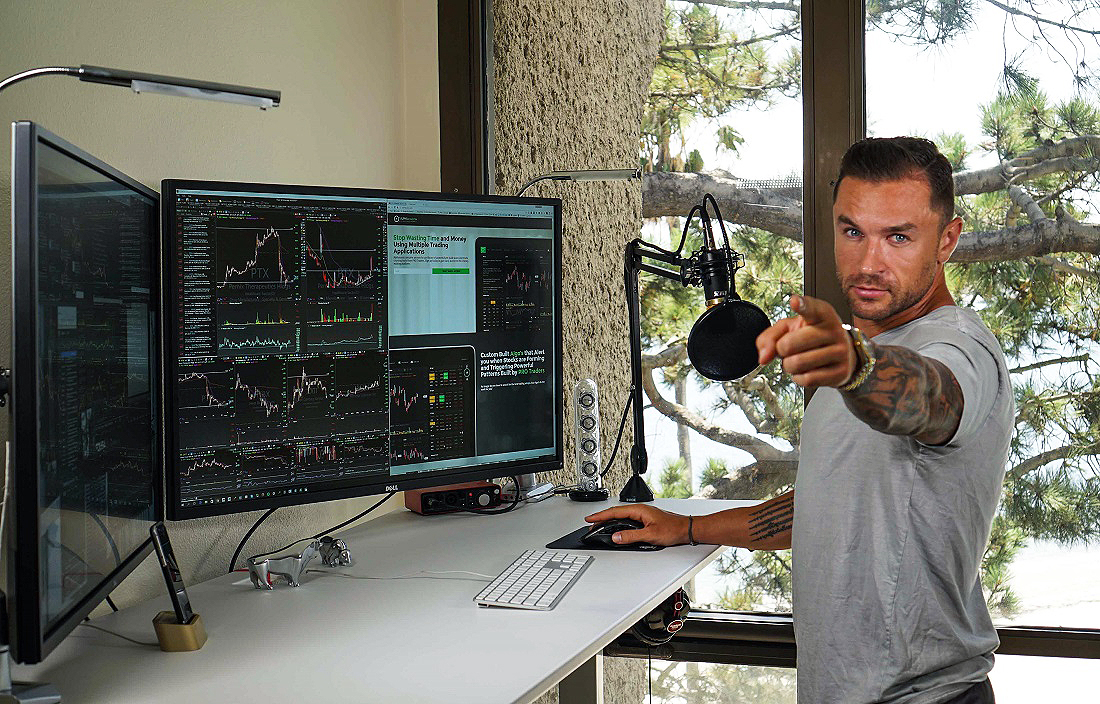
How can someone practice trading without investing large sums of money?
A lot of people that try it fail because either 1) they don’t have the mental capacity for it and more importantly, 2) they are not educated. I run a live broadcast every morning for two hours basically explaining all my trades in detail. You could basically see my trading screen live and watch my commentary. You’re looking at the exact stocks that I’m trading.

Another way is to actually do paper trading. Set up a fake account and get used to the chart movements. Get used to buying and selling stocks without having that actual emotional attachment to money because that’s when it really starts messing with your head when you actually have emotional attachment and you see your account going red or your account going green. It’s a very manic-depressive game and it’s very, very fast paced. I have days where within the first 30 minutes, I’m up $3,000 and then 20 minutes go by and I’m down $1,500. Like, “Holy shit, I should have sold that stuff.” I’ll be like, “Damn it!” It’s very, very fast paced. The only way to get into it and actually know if you do have the mental capacity is to try, but again like I said, one way to do it is to through paper trading where you have a fake account.

There are lots of different websites out there that can offer you paper trading. They will set you up an account so most people start with $2,500 to $10,000. That’s a great way to get practice, get a feel for how charts work, and how the strategy works before you actually get into it. But really you never know until you actually put your money on the line. Once you get in the hot seat and click that buy button, you’ll get the butterflies in your stomach and be like, “Shit! What’s it going to be?” That’s what funny about it. It’s exciting as long as you are winning. There are also definitely very, very stressful times where I’m freaking like, “I hate this job.” Then the other times is like, “Man! This is just awesome. I just made $15,000 in a day.” That’s unreal. Where else can you really do that?

Realistically, how much bankroll should someone have when starting out with day trading?
What I would typically recommend is about $10,000 to start, which would be a good base. That’s what I initially started out with years ago and I lost it all. I put another $5,000 in and lost all that too. So I put another $5,000 in and then just slowly grew up from there and now I have been making a consistent profit for many years now. Minimum to start with the brokers that I recommend is $2,500. You can start as low as that. You can start as low as $500 but you’re going to have a very difficult time being able to pay your commissions as well as build your account at the same time.

If you really want to have a solid base to get started with, then $10,000. If you’re over $25,000 then you’ll get past that PDT rule, which is called the Pattern Day Trader rule. If you’re under $25,000, you are actually blocked by the PDT rule. You only have four round trip day trades within I think five business days. I can’t remember exactly what it is because I haven’t been under that rule for awhile, but that limits your trading abilities.
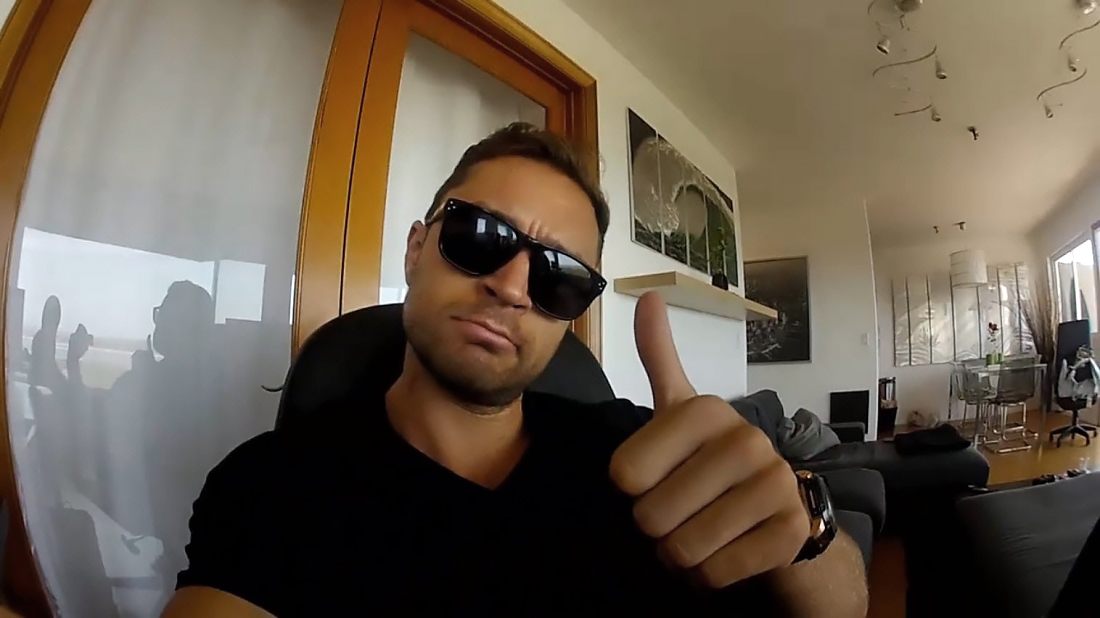
You now teach thousands of students online. What made you originally decide to share your strategies?
I started the technicaltrader.net in 2006 because I felt like I had a knack for trading. I felt like I was very good at identifying patterns and knowing when to buy and sell. The problem for me in the beginning was being able to have that mental capacity to say, “All right, you need to sell here, this is the pattern. Buy here, sell here.” There is a difference between knowing what to do and actually doing it. That’s where discipline comes in to actually follow through with your strategy and being able to click that sell button and take that loss rather than holding on to the stock.

Education, first and foremost, is the most important thing you can do for yourself. Learn from someone whether it be me or anybody else. Find someone else that’s done it and made it in this game. Figure out how they do it and learn that shit like the back of your hand so you can try to mimic that. A lot of people just try to wing it and there is no winging it in the stock market, you will fail. Ultimately, my job is to try to basically help people get past those barriers that I had that helped me become a successful trader. It took me almost three years or more before I really actually started making money in the stock market. That’s the entire point of my business and my training package. I basically teach them all the mistakes I made and teach them exactly how I now make money in the stock market.
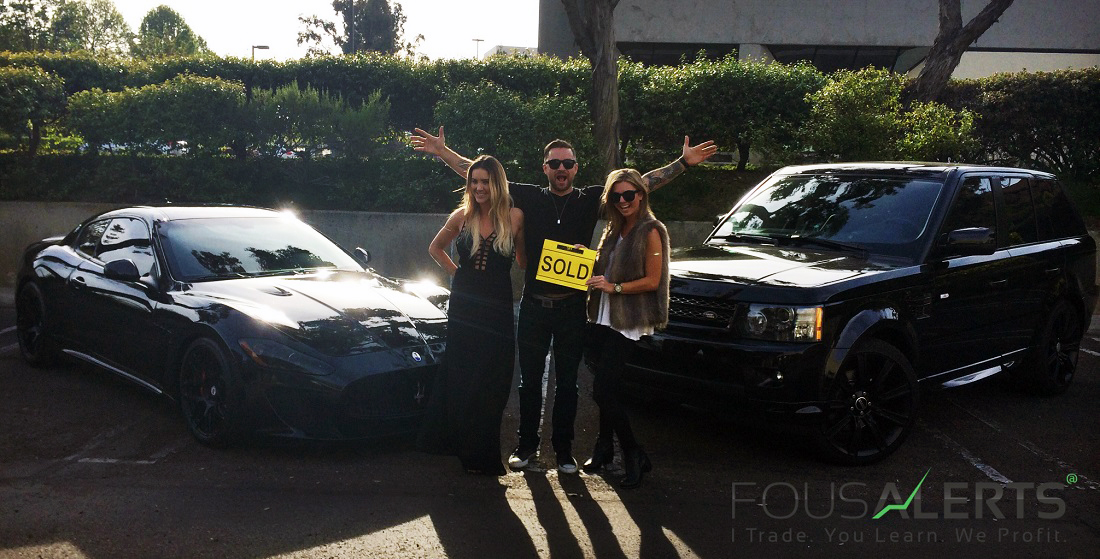
Back when it was free, I was just building up a community and building up a reputation. The only way you can actually build a reputation is by making good stock picks, and that’s what I did. I had a lot of good reviews on this old website called feedthebull.com. This is back in like 2006 and 2007. Being able to become a trainer begins with being able to make good stock picks and actually building a community that believes in you. That’s really what led me to believe, “Okay, maybe this is something that I can do for a living” because I did have that following. I had good feedback from my customers and clients that were part of my community saying, “Hey, Fous, you’re the man. I just made this much money off this stock pick and I’m learning so much off this stuff that you are teaching.” To be able to make that leap into becoming a trainer is basically by building a following and having their support to be able to turn it into a legit trainer business.

As someone who has an online academy along with courses to purchase, how do you determine the right prices?
It was basically just try and error. I tried many different price points. I’m actually one of the older pioneers doing this business. When I first started, I did my monthly plans at $50 a month and that’s relatively cheap. Nowadays, I won’t charge anybody $50 a month because that just won’t be worth my time.
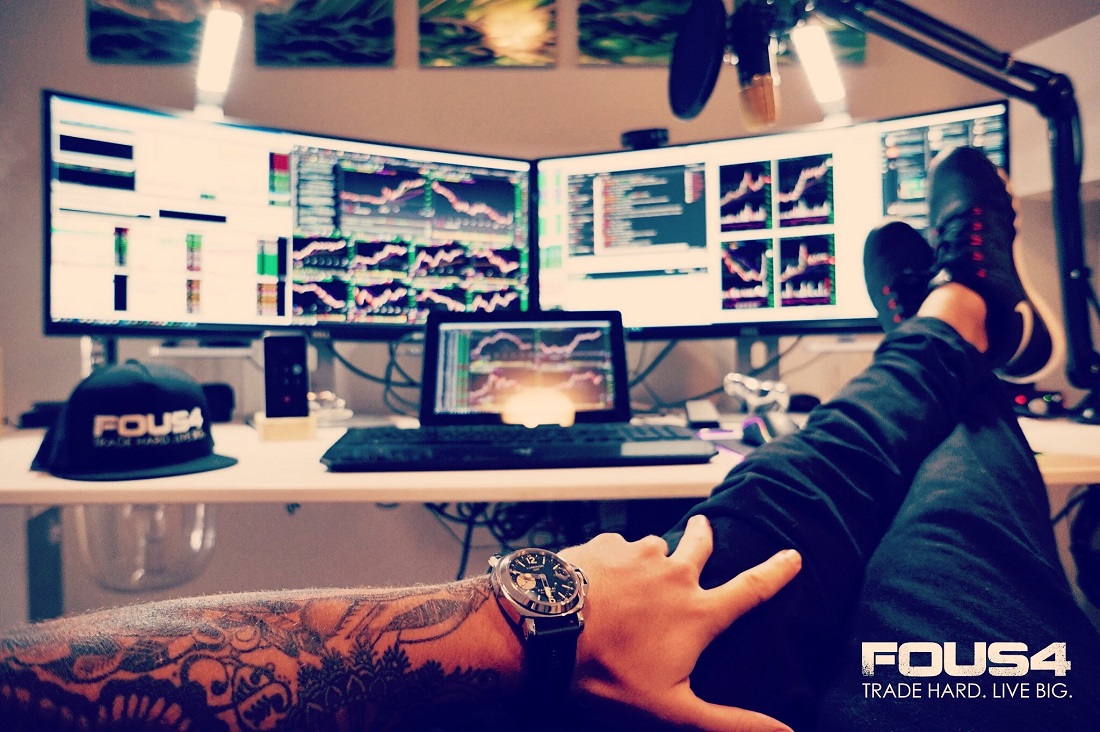
At that time, I didn’t have a DVD. I basically sell two different DVDs now and if you buy them individually, they are $497 a piece. If you buy them as a package, it’s $897, so you save a $100. My DVDs have always been at the same price point, which is relatively cheap for the stuff that you can learn. It’s my knowledge over the last 10 years of trading packed into 14 hours. You could make that $900 back on one single trade easily if you stick to the strategy and actually learn it.

As far as my monthly memberships go, it started at $50. Now I charge between $197 a month and $99 a month, but my services have increased a lot. When I started out at $50 a month, all we had was a forum in the very beginning and that was it. Any time I made a buy or sell, it was actually sent out through email, which is a pretty delayed system. This is back in like 2006. Now, we have a really cool chat room. Anytime I buy or sell a trade, you get a text message immediately.

I also run a live broadcast every morning for the first two hours, which is when 90% of my trades go down saying, “Hey! I’m looking at this stock. I’m buying here, I’m selling here.” So, it’s all broadcasted in real time. People get to see exactly what I’m doing and exactly what I’m training, which also differentiates me from a lot of other traders or trainers out there, is that my students actually get to see what I’m doing.

If somebody wants to follow me, they can do whatever they want. I don’t touch anybody elses money. All I do is show people what I’m doing with my money and how I exactly I’m making money for myself using my strategy that I have been using for the last 10 years. From there, hopefully they understand that strategy and they have gone through that training that I have taught them. Either they are already in that stock with me or they are waiting for the alert and trying to get in after me. The ultimate goal is to create sustainable traders that can make money using the strategy that I have been using for the last 10 years.

“I think there is probably potentially more money by running a successful education company because you can scale it so large. You have a worldwide audience to cater to. I have clients from all over the world that are interested in trading stocks. People want to know how I just made $8,000 in a day. Thousands, if not millions of people would love to learn how to do that.”
– Cameron Fous
What are you currently doing for marketing?
One of the biggest things is by proving that you are making money. Showing either screenshots of your trades or showing what your students have made by posting it on Facebook or Instagram with some kind of motivational quote or saying, “Hey! I just made X amount of dollars using this strategy and look how much my students just made.” I also post screenshots within my chat room of people saying, “Hey Fous! Thanks so much,” or just motivational emails where people are saying, “Hey Fous! I just made X amount of dollars by using your strategy.”

I have a student that made about over $46,000 in just about a week. He souped up his Mustang Cobra to about 750 horsepower and has a FOUS4 license plate on the back of his car. I change a lot of people’s lives. I’m not saying that I’m going to make people millionaires or rich, but what I can do is change a lot of people’s lives and help them make supplemental income by using my strategy as a part time job.
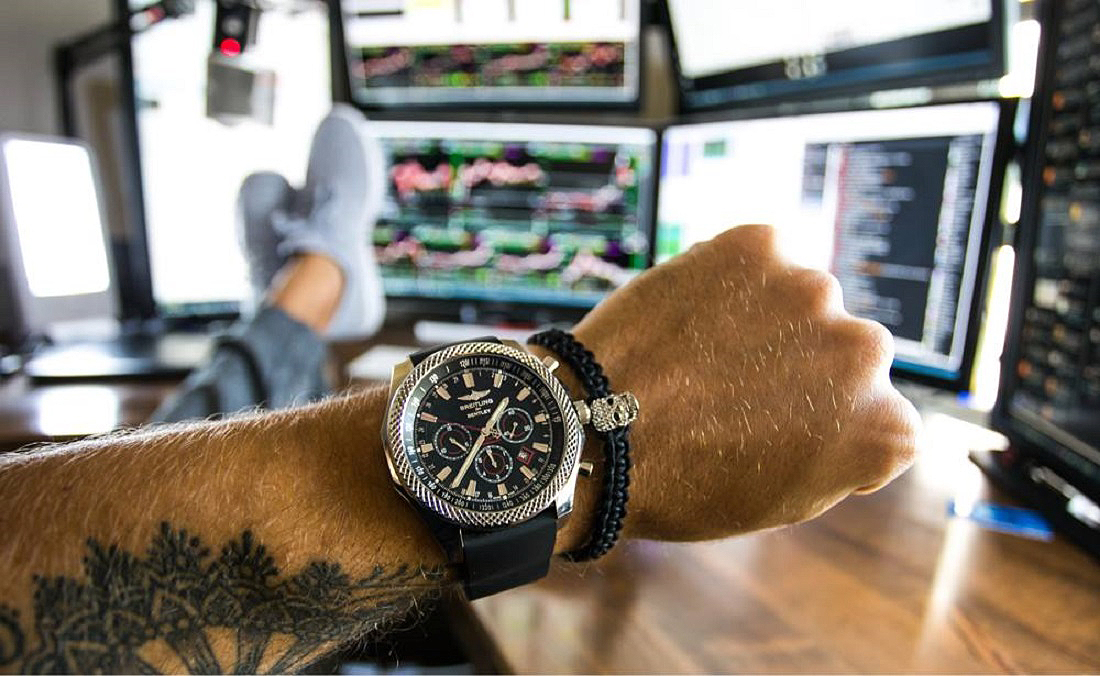
At what point does it make sense to focus on your teaching business than trading?
I think there is probably potentially more money by running a successful education company because you can scale it so large. You have a worldwide audience to cater to. I have clients from all over the world that are interested in trading stocks. People want to know how I just made $8,000 in a day. Thousands, if not millions of people would love to learn how to do that. I can only make so much money trading small cap stocks depending on how much capital I have but I can’t grow my business and audience on a very grand worldwide scale.
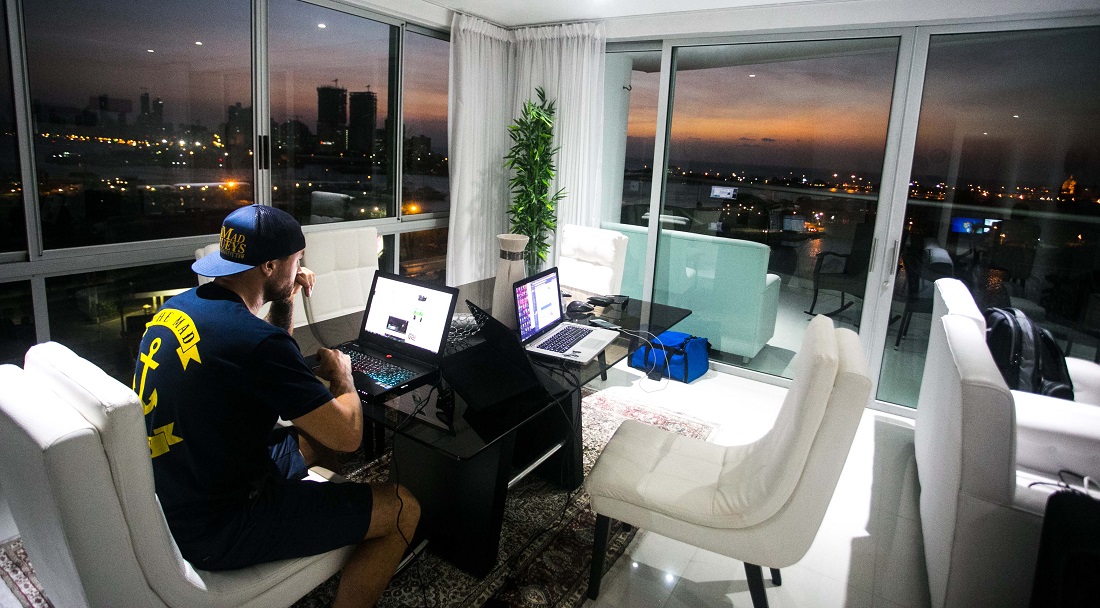
March was one of my biggest months for trading as well as one of the biggest months for my business. We brought in over six figures selling memberships and trading packages. I also made about $60,000-$70,000 trading. I could have been done for the year. That’s a crap load of money for someone to make as an annual salary and I just did it within a month. It was all done through Facebook, Twitter, and Instagram. I’m basically getting zero traffic from Google right now because I was penalized. I have paid about $15,000-$16,000 trying to even get out of that with an SEO company right now. So that’s also holding us back. We could be doing a lot more business if we were in the eyes of Google searches right now but we are basically only leveraging through social media and email campaigns. We are able to make over a $100,000 in revenue through my business just through social networking.

Looking back are there any lessons learned from failures in business?
As far as building my company, some of the biggest mistakes and downfalls I’ve had is trying to find somebody to work with. Someone that can actually help leverage my company – whether it be SEO services, PPC campaigns, or anything like that. I have never worked with anybody that’s done anything for me beneficial. Initially why I got screwed over by Google is because I found this guy here locally in San Diego. I Google’d “San Diego SEO” and he popped up as the number one search.

For a while, I did have the number one spot for “penny stocks to buy”, “penny stocks to buy right now”, “hot penny stocks,” etc. He did do a good job but what he was doing was spamming back links. I had no idea what he was doing, but it was working and I was like, “Oh man, we are ranked number one for these keywords over some major big companies that are paying $15,000-$20,000 a month for SEO and I was paying this guy about $1,500 a month. There was a red flag right there but I didn’t really know that much about SEO at the time and now I have wasted over $15,000 in the last six months to try to get out of this whole Google fiasco as well.
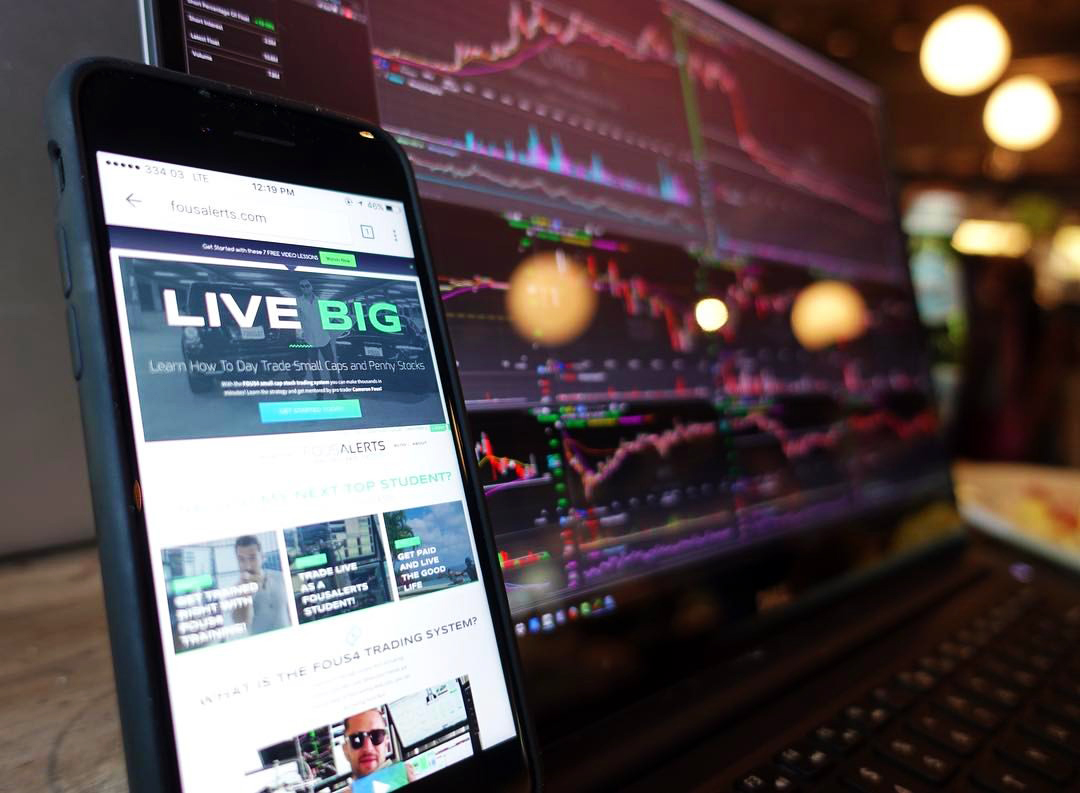
For me, the biggest mistakes I’ve made as far as business goes is trying to find someone that can actually leverage your company. It’s very difficult to find anybody worthwhile on the internet – whether it’s website design or marketing services. The best results I’ve had is just by doing things myself, trying to build a motivational campaigns via content marketing on Facebook, just by promoting trader lifestyle – posting pictures of my Maserati, post pictures of me waking up at 4 AM because that’s when the stock market opens at in Hawaii. There is money to be made and the best way to promote this kind of business is to promote the trader lifestyle, the kind of freedom you can have.

I’ve basically been doing everything on my own for a long time. I built my own website, technicaltrader.net, back in 2006. I do all my own graphic design. I do most everything on my own and I’ve just been burnt out about it. Now, I’m finally branching out and finding new people to help me out with my stuff. It’s finding people that you trust and that you’ve known. I met my PR expert through a mutual friend. My sales guy is a guy that’s been a student for the last three years and I brought him onboard. It’s just trying to find people who you can work with and you can trust. All I should be focusing on is making my customers happy, making money, and trading stocks. I need to have a team that can handle sales, someone that handles marketing, and someone that handles PR campaigns. I think building a team is the best thing you can do for your business.
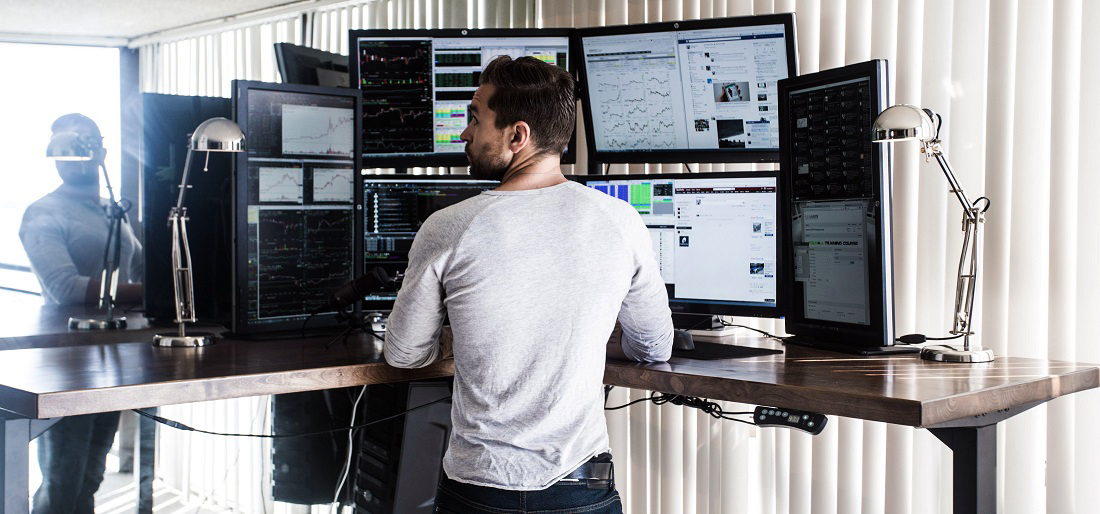
We want to thank Cameron for sharing his trading tips and tricks. You can learn more at the following places:

“As I tell everyone,
losing money in the stock market is a choice. It’s not that the game is rigged. It’s not that there’s some kind of scam going on. Anytime you buy a stick, you have that decision and the right to sell that stock if it goes into a losing position… The only reason why anybody loses money in the stock market is because they chose to lose.”
– Cameron Fous

